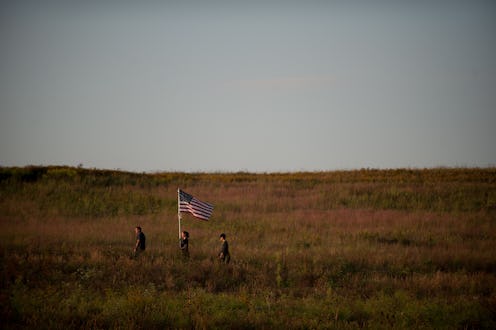News
Flight 93 Is A Story Of Bravery More Than Loss
On Sunday, the 15th anniversary of 9/11 fell across the United States like a dark, recurring shadow, as millions of Americans paid their respects to the men, women, and children who lost their lives in 2001. All eyes were on the former targets: the north and south towers of the World Trade Center in lower Manhattan and the Pentagon in northern Virginia. But there was one hijacked flight that day that never made it to a target — and remembering Flight 93 in Shanksville, Pennsylvania is an important way to honor the bravery of all those who responded to the 9/11 attacks.
United Flight 93 took off from Newark's Liberty International Airport just as the first hijacked plane of the day struck the north tower of the World Trade Center (WTC). It reached its cruising altitude as the second plane struck the south tower of the WTC. Its hijacking was in progress while the third plane struck the Pentagon. At the time, the San Francisco-bound Flight 93 was turning back eastward, likely headed for Washington, D.C.
As you know by now, Flight 93 never made it to its destination. In fact, to this day, it remains unclear where the hijackers had intended to crash the Boeing 757. Because of the bravery of passengers onboard, Flight 93 crashed not into an iconic building, but into an open field about 70 miles southeast of Pittsburgh.
If there's one uplifting phrase to have come out of the tragic 9/11 attacks, it has got to be, "Let's roll." When hijackers took control of Flight 93, passengers worked together to fight back. Passenger Todd Beamer, 32 at the time, placed a phone call from the plane, which was answered by switchboard operator Lisa Jefferson. Beamer and Jefferson prayed together, discussed what was going on aboard the plane, and talked about their families, according to The Guardian. Then, just before the call was disconnected, Beamer said to someone else on the plane, "You ready? O.K. Let's roll."
Those words seemed to signal that the passengers were ready to launch their revolt. Ultimately, it's unclear if they ever regained control of the plane, but they certainly prevented the hijackers from reaching their intended destination. The plane crashed at 10:03 a.m. Eastern, in a field near a coal mine. Although all passengers and crew onboard Flight 93 perished in the crash, they spared an unknown number of lives on the ground. Had the hijackers made it to their target, they likely could have killed many more people in whatever building they had chosen to destroy.
Now, there is a building in the field where Flight 93 crashed. The National Park Service's Flight 93 Memorial and Visitor Center opened ahead of last year's 14th anniversary. While the sites of the other three plane crashes have been memorialized and rebuilt in the 15 years since 9/11, there's something special about the Flight 93 site, a structure where there hadn't previously been one.
